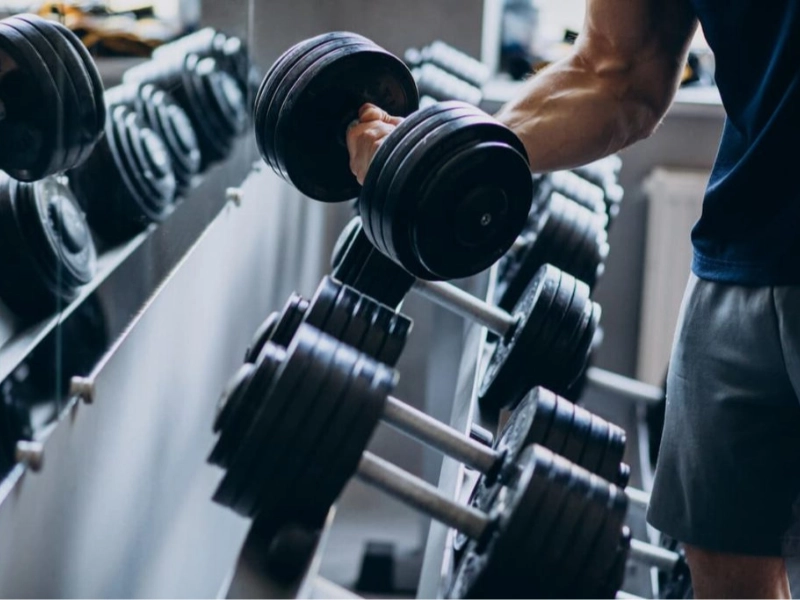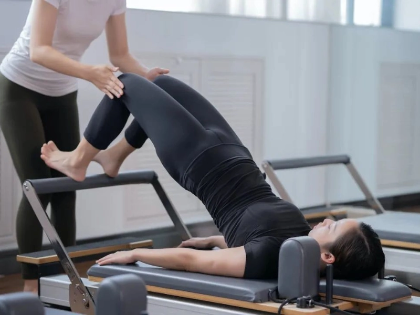MasteringFree Weights: Building Strength At The Gym
At the gym, experts raise barbells while beginners stay on machines to reduce the chance of being pinned by big weight or barbell drop on oneself. Free weights have a benefit, though: they challenge stabiliser muscles more than machines that control your movement for you.
Fortitude

Changeability
 Resistance training, all things considered, improves body composition, accelerates muscle development, and shapes a lean body. Still, strength cannot be developed without some degree of adaptability.
For this reason, especially before and after you use the weights, you should include flexibility exercises in your program. It will enable you to avoid damage and increase the efficiency of your exercise.
One can achieve flexibility by using the body's own weight (push-ups, planks and sit-ups) or a tiny medicine ball. It guides your proper and good form execution in exercises. It also helps with posture, lessens muscular stiffness during activity, and lowers your chance of injury.
Although you should not hesitate to enter the free weight zone, always proceed with care and a strategy. See and learn from other gym patrons; if you are unsure about using the equipment, seek help from a MINT Personal Trainer. Remember, safety comes first in the free weight zone and you should never overload the bar or fling weights around — it will only end in tears for you and your fellow gym-goers.
Resistance training, all things considered, improves body composition, accelerates muscle development, and shapes a lean body. Still, strength cannot be developed without some degree of adaptability.
For this reason, especially before and after you use the weights, you should include flexibility exercises in your program. It will enable you to avoid damage and increase the efficiency of your exercise.
One can achieve flexibility by using the body's own weight (push-ups, planks and sit-ups) or a tiny medicine ball. It guides your proper and good form execution in exercises. It also helps with posture, lessens muscular stiffness during activity, and lowers your chance of injury.
Although you should not hesitate to enter the free weight zone, always proceed with care and a strategy. See and learn from other gym patrons; if you are unsure about using the equipment, seek help from a MINT Personal Trainer. Remember, safety comes first in the free weight zone and you should never overload the bar or fling weights around — it will only end in tears for you and your fellow gym-goers.
Synchronisation
 Your neighbourhood gym is probably LOADED with treadmills, ellipticals, and hundreds of weight lifting machines each aimed at one particular muscle region. Usually beginning with the cardio equipment, most newcomers move over to the free weight area where they feel most scared.
Correct lifting of a heavy barbell or dumbbell requires coordination and control. This is particularly true while working on exercises including complicated, multi-joint motions like bench lifts and squats.
Fortunately, performing workouts involving your own bodyweight will help you strengthen and improve your coordination without even handling a barbell. Beginning exercises for core strength and appropriate form are push-ups, sit-ups, and planks. Before working with the big guys, you can strengthen and coordinate with medicine balls, kettlebells, sandbags or resistance bands. If you're not sure where to start, watch other free weight zone gym goers and ask MINT personal trainers for direction.
Your neighbourhood gym is probably LOADED with treadmills, ellipticals, and hundreds of weight lifting machines each aimed at one particular muscle region. Usually beginning with the cardio equipment, most newcomers move over to the free weight area where they feel most scared.
Correct lifting of a heavy barbell or dumbbell requires coordination and control. This is particularly true while working on exercises including complicated, multi-joint motions like bench lifts and squats.
Fortunately, performing workouts involving your own bodyweight will help you strengthen and improve your coordination without even handling a barbell. Beginning exercises for core strength and appropriate form are push-ups, sit-ups, and planks. Before working with the big guys, you can strengthen and coordinate with medicine balls, kettlebells, sandbags or resistance bands. If you're not sure where to start, watch other free weight zone gym goers and ask MINT personal trainers for direction.
Damage Prevention
 The most typically occurring gym injury is probably overuse of muscles brought on by too frequent exercise without enough recovery between sessions. Using muscles excessively raises the chance of muscular imbalances, poor technique, falls from equipment like free weights that could crush you. This is why you wish to start slow and progressively raise the frequency and intensity of your workout every time.
Lack of appropriate warm-up and pre-workout stretching causes another frequent gym injury. This raises your chance of injury as well as perhaps affecting the outcomes of your exercise.
Working with experienced gym instructors or personal trainers is last but not least a significant injury prevention strategy. They can provide you advice to lower injuries, how to execute exercises, and how to use gym equipment correctly. This keeps you from damaging other gym patrons or yourself. Ultimately, you want nothing more than to avoid flinging a barbell across the room and striking someone in the face!
The most typically occurring gym injury is probably overuse of muscles brought on by too frequent exercise without enough recovery between sessions. Using muscles excessively raises the chance of muscular imbalances, poor technique, falls from equipment like free weights that could crush you. This is why you wish to start slow and progressively raise the frequency and intensity of your workout every time.
Lack of appropriate warm-up and pre-workout stretching causes another frequent gym injury. This raises your chance of injury as well as perhaps affecting the outcomes of your exercise.
Working with experienced gym instructors or personal trainers is last but not least a significant injury prevention strategy. They can provide you advice to lower injuries, how to execute exercises, and how to use gym equipment correctly. This keeps you from damaging other gym patrons or yourself. Ultimately, you want nothing more than to avoid flinging a barbell across the room and striking someone in the face!








